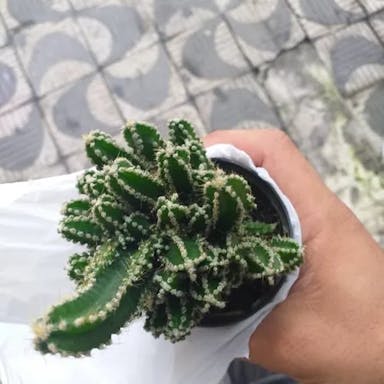Cliff prickly-pear, scientifically known as Opuntia polyacantha, is a species of prickly pear cactus native to North America. These cacti grow well in dry areas as they need little water. The pads can reach 15 cm across and are covered in spines up to 6 inches long. In late spring yellow flowers appear which later produce red or purple fruits called tunas. This is an easy plant to cultivate in sunny areas with sandy soil. There are many varieties of Opuntia polyacantha which differ in pad size, spine length and flower color. It is often used in xeriscaping gardens because it is drought tolerant and needs minimal care.
0
0












